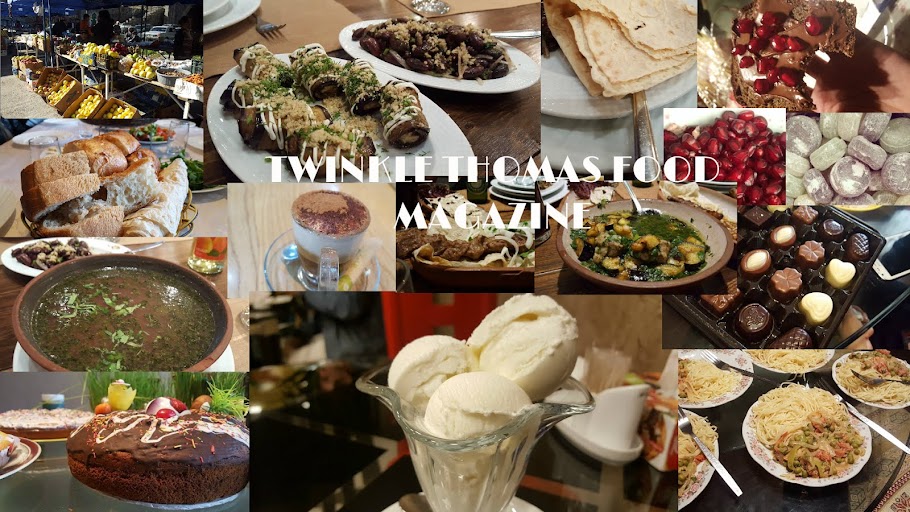 |
| IMAGE OWNER: SOUMYASHREE CHATTERJEE |
India is a land of diversity and the
melting pot that it is different cultures have all blended in to make a unique
offering whether that be from language, customs or community. Food of India is
no different, the tamarind of down south, sweet of east, spice of west all melt
in the butter of north to give a unique taste that is India. Indian
subcontinent over the centuries has seen many an invasion and with each
invasion all embracing India has also embraced a new element of cuisine in her.
One of the most dominant rulers of India have been the mughals, and while
embracing them we have been very strongly influenced by the cooking style that
they brought from central Asia. Korma is one of the dishes that was typically
mughal and has been developed in the kitchens of India as an evolution from what
the mughals brought with them.
Korma which finds its name originating from
the Turkish word kavurma which means cooked meat. This essentially comes from
the fact that korma is nothing but braised meat or vegetables in a spicy sauce.
The classical preparation of the dish involved cooking over a low flame, with
charcoal being used on top of the cooking pot. Another important element of
cooking korma is using yogurt and stock in the process of cooking. The word
shahi meaning royal is often associated with the dish, signifying that it was a
dish not for the gentry but the royalty.
Traditionally the korma was a non
vegetarian dish, but has evolved to incorporate vegetarian elements. The
navratan korma is one such evolution where 9 different vegetables being imbibed
often with paneer and nuts to make a delectable offering. While various meats
like poultry, lamb even beef being used to make a korma, a Bengali like me
finds his heart singing for fish and we will try and make our korma from fish.
The key elements of making a korma imbibe
braising of the meat, and the sauce which is a spicy concoction of yoghurt,
nuts, coriander and cumin. Marinating of the meat prior to cooking is an
essential and critical aspect of the cooking. While making our fish korma we
will take a check to ensure that all these traditional and important elements
are imbibed while adapting the dish for today’s kitchen.
Like every journey of cooking, this shahi
or royal one will also commence with mundane collection of ingredients for the
cook. While various kinds of fish can work for the cook, we will use carp in
the form of rohu or catla for this as they are firm fleshed fish, with just
enough fat ideal for this kind of dish. Barramundi or as it is colloquially
known bhetki is another variant of fish that can be used for this dish. We
would ideally get the fish filleted of bones and made into cubes or chunks
which are just bigger than an even bite.
To make a portion serving about 4
people we need the following
1.
Fish of our choice- ½ kg
2.
Curd-80 gms
3.
Jeera (Cumin) powder- 2
teaspoon
4.
Elaichi (Cardamom) powder- 1
teaspoon
5.
Kali Mirch (Black pepper)
powder- 1 teaspoon
6.
Dhaniya (Coriander) powder-1
teaspoon
7.
Laung (Clove) powder- ½ teaspoon
8.
Onion -1 medium
9.
Besan (gram flour)- 1
tablespoon
10.
Ajwain (carom)- 1 pinch
11.
Salt to taste
12.
Red chilli powder 1 tea spoon
13.
Milk- 1 cup
14.
Garlic-6-7 cloves
15.
Cooking oil- 6 table spoons
16.
Dhania (Coriander) and Pudina (mint)
leaves for garnishing
One of the most crucial elements of the
preparation is marinating the meat in the right manner. To prepare the marinating mix add all the spices namely cumin
powder, cardamom powder, black pepper powder, coriander powder, clove powder,
ajwain, red chilli powder into the yogurt and mix evenly. Now dip the fish
chunks in this mix taking care to evenly coat the chunks with it. Leave this
now for about 2 hours. Slice the onion into thin slices for teh cooking. Slice the
garlic cloves also very finely. Also chop the dhania leaves and pudina leaves for
garnishing and set aside.
Heat the cooking oil in a pan. Add the sliced
onions and finely sliced garlic and fry till brown. Now add besan and sauté
over a medium flame. Add half cup of milk to this and cover. Let the gravy to
thicken. Now add the marinated pieces of the fish into the pan and sauté over a
high flame for about 4 to 5 minutes. Add remaining milk and half cup water. Now
cover the pan and cook on low fire, to get the braising effect. Once the fish
and masala is cooked, transfer to a serving bowl and garnish with chopped
coriander and mint leaves. This dish can be served with hot chapattis fresh of
the flame or a bowl of fragrant steamed basmati rice.
A preparation for the royal courts was
always made with a lot of care and it is only fit that I remind you that my
mothers’ secret ingredient works best when cooking this dish to make it really
shahi. So do remember to add a more than even helping of love, and your best
smile while cooking to make it a dish fit for the royal court of the mughals.
Bon appétit.

No comments:
Post a Comment